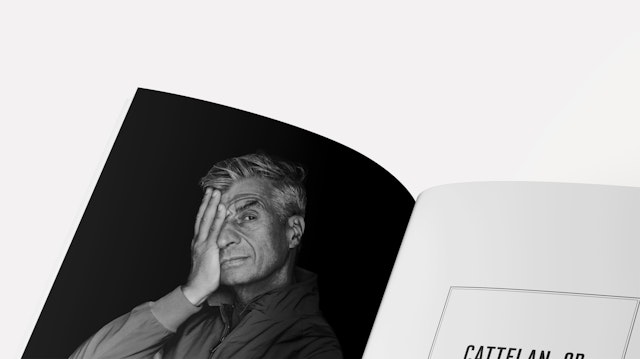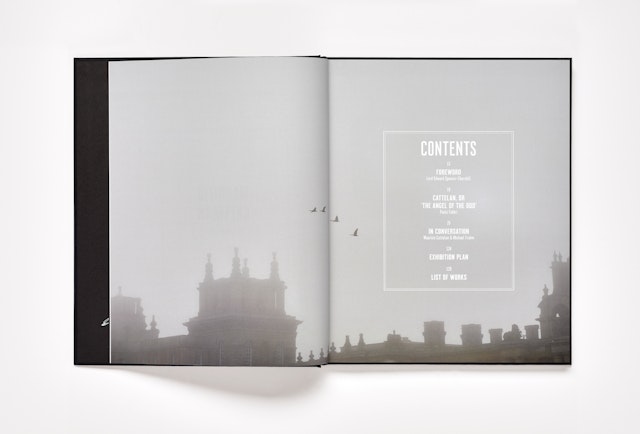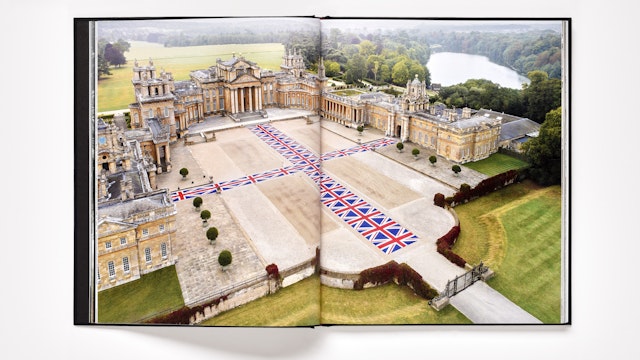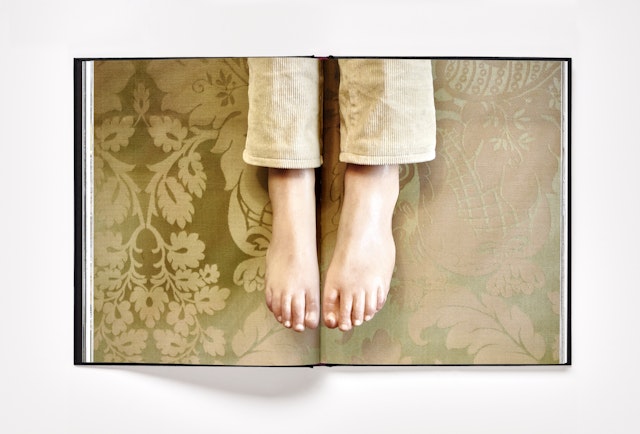

Not a catalogue in the traditional sense—most of which are published before the exhibition has even been hung—the book feels like an object in itself and acts as both a companion to and as a record of, the much-talked-about exhibition.








Pentagram has designed the book to accompany Maurizio Cattelan’s ‘Victory is not an Option’, a site-specific solo exhibition held at Blenheim Palace, a stately home in Oxfordshire. The Italian-born artist creates pop-culture-inspired pieces which make satirical and often hard-hitting comments on society, employing different mediums including hyper-realistic sculpture, taxidermy and gold plating.
The exhibition and the publication were commissioned by the Blenheim Art Foundation, which was founded by Lord Edward Spencer Churchill, who describes Catalan’s work in his introduction to the book as “Molotov cocktails in packing crates”. Blenheim is the birthplace of Winston Churchill, and is the only non-Royal building in Britain which can be called a palace—the artist took the opportunity to make full use of its elaborate Eighteenth-Century interiors and sweeping outside spaces.
Cattelan plays around with scale, placing miniature figures on mantelpieces and dangling them from pictures. Pigeons roost on the classical marble statues of the Chapel, and a life-size horse hangs from the ornate ceiling in the Main Drawing Room. The Pope appears prostrate in the State Room (after being hit by a meteorite), and a miniature and very baby-faced Adolf Hitler kneels pensively in the Long Library. Away from the main house, Michaelangelo’s Sistine Chapel is recreated in its full glory in a wooden box within the Stable Block, and over two thousand square metres of Union Jacks adorn the approach to the house.
The most controversial piece in the exhibition was a fully-working, solid gold toilet (entitled ‘America’), which was installed in the room that Churchill was born in, and which visitors were invited to book a three-minute slot for. In a daring smash and grab, the toilet was ripped out and stolen in the early hours and has not been seen since. Before and after pictures appear in the book, documenting what looks to be one of the most audacious art crimes of recent times.
The Blenheim Foundation commissioned Pentagram to design a 128-page hardback book to accompany the exhibition. Balanced by generous amounts of white space, dramatic photography by Tom Lindboe dominates the book, expertly showcasing the tension between the modern art and the antique interiors. In contrast to the glossy photographic spreads, the austere black linen-bound cover features just the title of the exhibition in restrained uppercase typography, set within a narrow frame with the artist’s name only appearing on the spine.
A matching frame device is used for the section openers, including the contents, introduction, and a conversation between the artist and the Director of the Blenheim Art Foundation Michael Frahm. An exhibition plan and an illustrated list of artworks shown as simple line-drawings appear at the end of the book.
Not a catalogue in the traditional sense—most of which are published before the exhibition has even been hung—the book feels like an object in itself and acts as both a companion to and as a record of, the much-talked-about exhibition.
